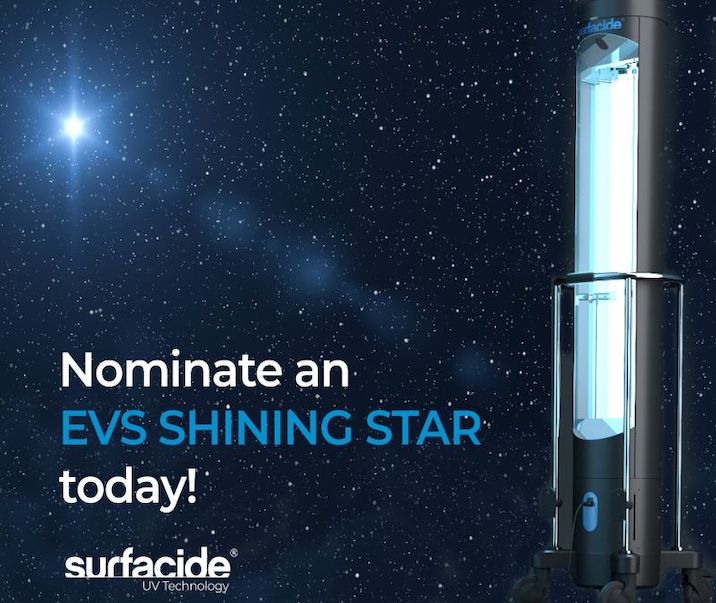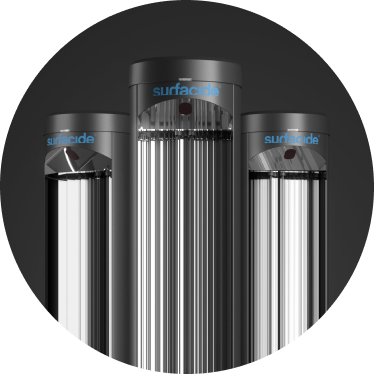Written By Farrell B. Melnick, PhD
The word Monkeypox has only come into our collective consciousness very recently but given where things started with the SARS-CoV-2 pandemic, and how quickly it progressed, it is not too early to cautiously consider this highly contagious virus and its potential impact.
As a leader in providing trusted and innovative healthcare solutions, we at Surfacide are always looking at ways that our disinfection technologies can improve people’s environments. Our own Farrell B. Melnick, PhD, Business Development and Strategic Scientific Consultant, gives us some insight into this virus.
Monkeypox is a rare disease that is caused by infection with monkeypox virus. Monkeypox virus belongs to the Orthopoxvirus genus in the family Poxviridae. The Orthopoxvirus genus also includes variola virus (which causes smallpox), vaccinia virus (used in the smallpox vaccine), and cowpox virus. (Centers for Disease Control and Prevention}.
What Is Monkeypox?
The first U.S. confirmed case in 2022 of the contagious monkeypox disease, similar to those that cause smallpox and cowpox, was reported recently in Massachusetts. Scientists at the Centers for Disease Control and Prevention (CDC) are collaborating with the Massachusetts Department of Public Health to investigate a situation in which a U.S. resident tested positive for monkeypox on May 18 after returning to the U.S. from Canada.
According to the CDC, the sample is the West African strain, which is the milder of the two monkeypox strains. Most people who become infected recover within two to four weeks with little or no intervention.
According to NBC News: The CDC cautioned this past Monday that it expects to see more rare monkeypox cases emerge in the United States in the coming weeks despite only confirming the one case so far, noting it is evaluating another four possible cases already linked to the same virus family. One of the latter is being treated in isolation in New York City.
CDC is also tracking multiple clusters of monkeypox that have been reported in early- to mid-May in several countries that don’t normally report monkeypox, including in Europe and North America.
What Are The Symptoms of Monkeypox?
The first symptoms of monkeypox include fever, malaise, headache, and sometimes sore throat and cough. A distinguishing feature of monkeypox from smallpox is lymphadenopathy (swollen lymph nodes). This typically occurs with fever onset, 1 to 2 days before rash onset, or rarely with rash onset. Lymph nodes may swell in the neck, armpits, or groin and occur on both sides of the body or just one (CDC).
At this time, there are no specific treatments available for monkeypox infection, but monkeypox outbreaks can be controlled. According to the CDC, smallpox vaccine, the drug cidofovir, the anti viral ST-246, and vaccinia immune globulin (VIG) can be used to control a monkeypox outbreak.
One vaccine, JYNNEOSTM (also known as Imvamune or Imvanex), has been licensed in the United States to help prevent monkeypox and smallpox.
In addition, a recent study showed that human Interferon, could potentially serve as a therapeutic tool to help inhibit the monkeypox virus. (Johnston, et al., Virology Journal 2012, 9.5).
How Does Monkeypox Spread?
Smallpox virus has been shown to spread between people primarily by droplet nuclei or aerosols from the oropharynx of infected persons and by direct contact (Henderson, et al., JAMA 281: 2127-2137; Wehrle, et al., Bull. W.H.O. 43: 669-679; both cited in McDevitt., Applied and Environmental Microbiology, Sept. 2007, p.5760-5766). Because of the similarity of the monkeypox virus to the smallpox virus, it can be assumed that the spread of monkeypox can also occur via droplet nuclei or aerosols and that air disinfection in buildings may be able to help reduce their concentration. In their study conducted in 2007, cited above, McDevitt et al showed that 254 nm germicidal irradiation was able to greatly decrease the concentration of vaccinia virus, a surrogate for smallpox, in an exposure chamber under controlled conditions. They developed a dose response model for the vaccinia virus susceptibility, which they showed was also greatly affected by the prevailing relative humidity (RH).
We have learned from the SARS-CoV-2 virus experience, that changes in the viral genome or genetic sequence can greatly alter the protection afforded by vaccines. Methods to help reduce air and surface concentrations are very valuable.
According to the National Academies of Science Engineering and Medicine in the publication: “Microbiomes of the Built Environment” – “Microbes can be transported to and from indoor surfaces via aerosol routes, and it is recognized by the engineering and medical communities that airborne microbes deposit onto fomites and vice versa in response to human activity and common environmental perturbations;” (Prussin AJ, Marr LC. Sources of airborne microorganisms in the Built Environment. Microbiome. 2015;3(1):78; also see also chapter 3 of Microbiomes of the Built Environment”). Thus, disinfection practice should include both air and surfaces. UV germicidal irradiation (UVGI) is one physical approach for disinfection of air and surfaces.
The experimentation by McDevitt and his group successfully demonstrated the use of UV-C at 254 nm, in reducing viable vaccinia virus concentrations; vaccinia is similar to the smallpox virus and was used a surrogate in the experiments. The similarity of the monkeypox virus and its lipid containing capsule, make it very likely that UV-C light at 254 nm should also be effective in inactivating the monkeypox virus.
Can UV-C Light Kill Bacteria & Viruses?
Scientists have known for decades that broad-spectrum UVC light, which has a wavelength of between 200 to 280 nanometers (nm), is highly effective at killing bacteria and viruses by destroying the molecular bonds that hold their DNA together.
The Surfacide Helios system, utilizing 254 nm UV-C light has been shown to be effective in achieving low-level surface disinfection of lipid viruses (such as SARS-CoV-2) as well as vegetative forms of bacteria and certain fungi; and be a valuable asset to a cleaning and disinfection program, particularly in hospitals, pharmaceutical manufacturing and places where many people congregate, such as in the hospitality industry and schools.






